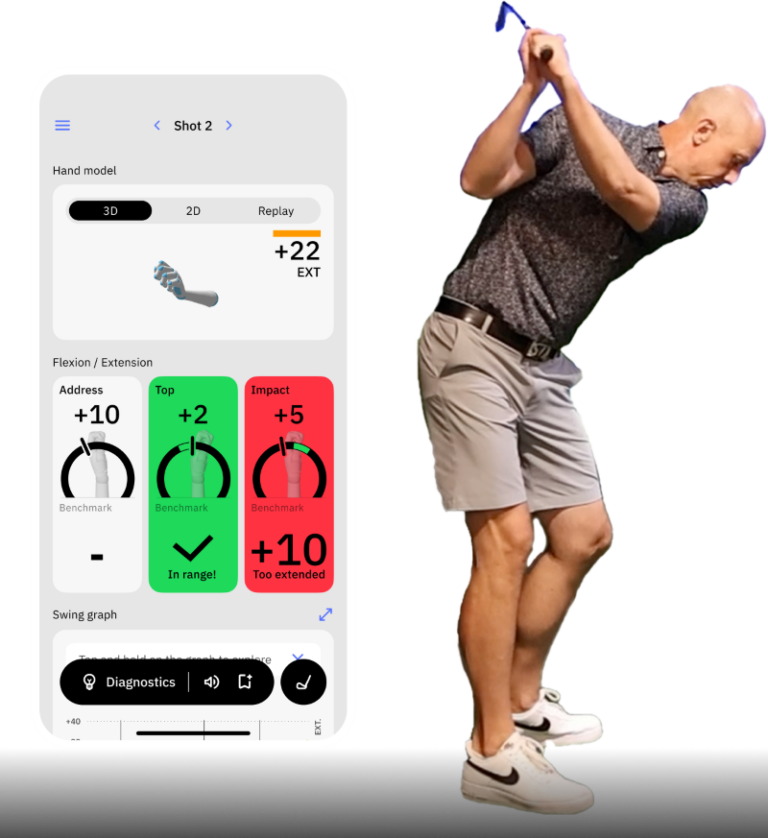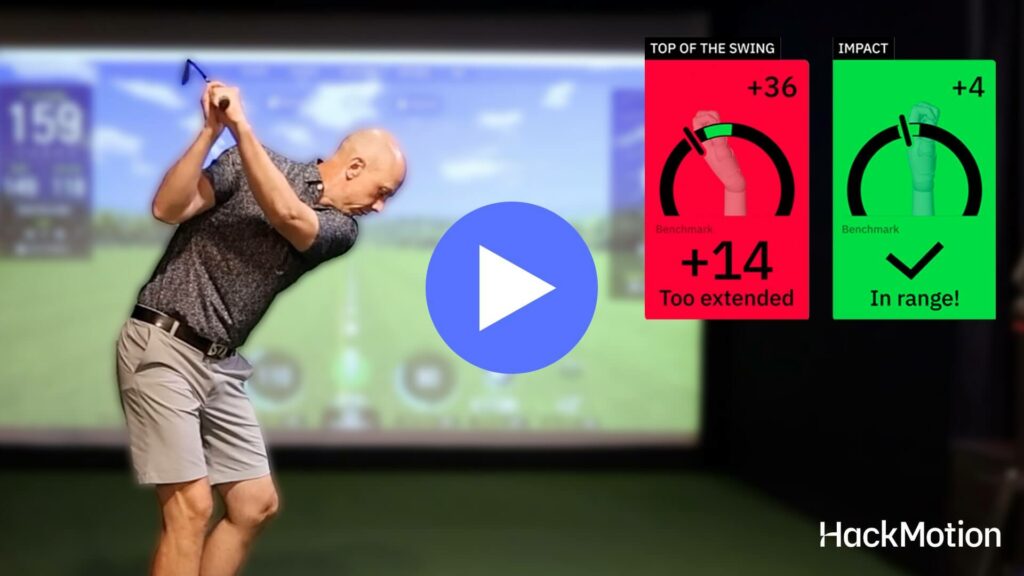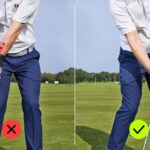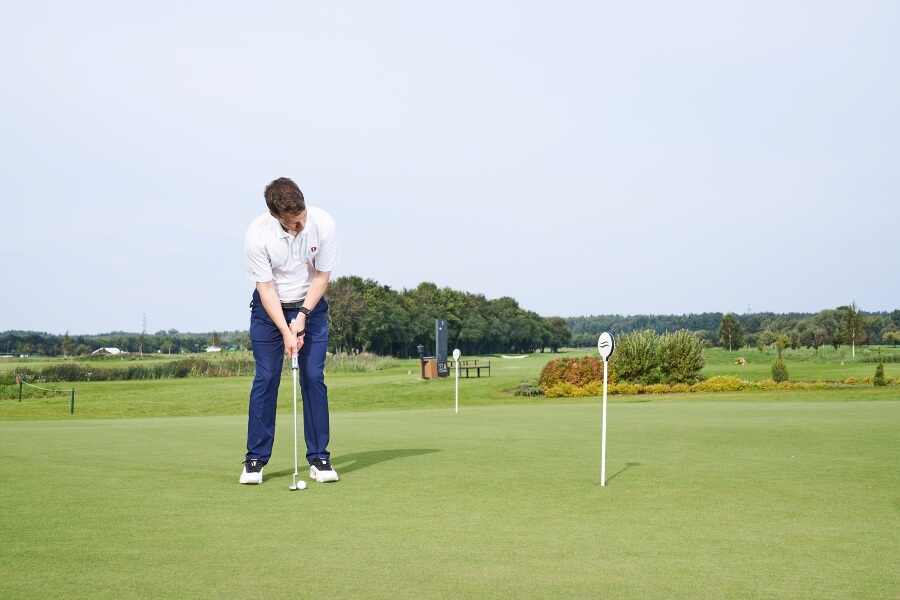Stop Overthinking in Golf: Practical Tips and Drills to Clear Your Mind and Play Better
Golf is unique among other sports because of the significant amount of downtime. While this can make for a relaxing day on the links with your friends, it can also be a breeding ground for swirling thoughts.
If you want to improve your score, you’ll need to learn how to control your thoughts and prevent overthinking.
This happens to golfers of all skill levels, whether they are new or experienced. But with the right game plan, a bit of practice, and plenty of patience, you’ll be able to reduce the effects of overthinking and shoot your best scores.
Start now by identifying the signs of overthinking and then learning how to combat them on the course.
Stop Overthinking in Golf (Key Takeaways)
Overthinking is something all golfers struggle with, whether they admit it or not. To help you understand why this happens, review the key takeaways below, then study the tips and perform the accompanying drills.
- Identify the initial signs of overthinking that may occur in different parts of your game.
- Create a preshot routine that focuses your mind and body.
- Recognize symptoms and how to correct them when on the course.
- Memorize a reset routine in case overthinking becomes an issue.
- Know how to avoid overthinking in your short game as well as your long game.
- Develop a warm-up routine that gives you confidence and keeps you calm, even before you step on the first tee.
Contents
Signs You’re Overthinking on the Golf Course
- Taking extra practice swings and changing the plan at the last second.
- Standing over the ball with multiple swing thoughts.
- Doubting club selection after committing.
- Rushing when behind or dragging when nervous.
- Replaying past mistakes mid-round instead of focusing on the next shot.
- Tight grip, shallow breathing, tense jaw, or tense shoulders.
Anti-Overthinking Pre-Shot Routine
Stop overthinking right from the start by developing a consistent pre-shot routine that will focus your mind and keep it from straying. Those who overthink often get caught up in the moment rather than sticking to their plan.
A pre-shot routine will make every shot feel the same, allowing you to perform at your best while making informed decisions that are not influenced by emotion.
- Assess: First, take in all the information for each shot, such as yardage, lie, wind, slope, carry/leave, etc.
- Decide: Next, decide on shot shape, start line, landing spot, club, and visualize what you want to happen.
- Rehearse: Create one purposeful rehearsal that aligns with your intent.
- Breathe: Downshift your arousal by exhaling longer than inhaling.
- Align: Use all the information to direct yourself to the intermediate target, set your clubface, and position your feet.
- Commit: Use your trigger phrase and go. For example, “See it. Feel it. Send it.”
If overthinking is holding back your game, working with experienced golf instructors can help you build routines that keep your mind clear and your swing consistent.
Popular Symptoms and Their Solutions
| Symptom | Likely Trigger | On-Course Fix | Preventive Action |
|---|---|---|---|
| Frozen over the ball | Decision doubt | Step off, re-evaluate the decision, and then commit | Adjust the pre-shot routine to become more confident in the decision-making process |
| Late swing change | Focus spike | Choose a swing focal point | Practice competitive drills on the range to add pressure |
| Fast tempo | Over-excited | Incorporate breathing techniques before each shot | Practice with a metronome to optimize tempo |
| Club second-guessing | Fear of failure | Believe in yourself and tell yourself you are right. You have to believe it. | Review the decision-making process the next day to optimize future game plans |
| Three-putting | Ill-prepared | Focus on weight more than line | Practice short putts to increase confidence with 3-footers; therefore, your long putts will only need to be within 3 feet. |
On-Course Reset Routine During Tense Situations
Use a 10-second reset when tension spikes
- Step away and face the horizon, sky, or non-golf part of the property.
- Take one deep “physiological sigh” (two short inhales, one long exhale).
- Re-label your feelings and emotions. “Nerves mean readiness.”
- Re-commit with one external cue.
- Focus on your think box: Behind the ball, planning only.
- Then move to your play box: Over the ball; no new information allowed.
- If the wind/lie changes at the last second, pick the simpler shot.
- When torn between two clubs, choose the one with more loft and swing with commitment.
How to Avoid Overthinking in the Short Game
Many of the techniques used in the long game can be applied to the short game to prevent overthinking.
But since the short game is based more on feel and less on mechanics, it can be harder to keep the intrusive thoughts at bay.
Use Hackmotion to track your practice sessions in all areas of your game, including the short game. The system will recommend personalized drills to address your specific pain points.
Pitching
Focus on follow-through and trajectory. This will keep your mind busy and will block any doubt that may creep up.
By focusing on these two aspects, your brain will subconsciously execute a sound mechanical swing to produce the shot you are imagining. Trust yourself to make it happen.
Chipping
Train your thoughts on your landing point and the amount of roll you expect. Too many amateur golfers are focused on the cup as their target, which throws off the weight of their shot.
All your practice swings and decision-making process should be to create and execute a shot that flies to a landing point and rolls out from there.
Putting
Place 90% of your focus on creating good weight on each putt – the last 10% on the proper target line. Choosing and executing the correct weight is much more important, but also much more difficult to achieve.
If you find yourself overthinking on the putting green, it’s probably about the line, which is less important. Refocus your thoughts on the weight.
45-Minute Warm-Up Plan to Prevent Overthinking
| Minute | Focus | Details |
|---|---|---|
| 0 – 5 | Breath and mobility | 2 sighs before each movement, open hips, loosen back, and stretch legs and shoulders. |
| 5 – 15 | Contact and tempo | Start with the short game: 10 chips, 10 pitches, 10 bunker shots. |
| 15 – 30 | Ball flight windows | 6–8 irons, 6–8 drivers, focus on your natural shot shape |
| 30 – 40 | Random targets | Go through your full preshot routine for 8-10 shots to all different targets. |
| 40 – 45 | Putting speed | 3-5 long putts, 8-10 short |
Drills to Reduce Overthinking
These drills combine training your mind to focus with a few mechanical improvements.
Reducing overthinking is an ongoing effort, so in order to avoid frustration and boredom, it’s good to work on a few different things at the same time.
Hit Hard, Stop Quick Drill
This drill helps you improve your ball striking and will also develop a solid tempo in your swing.
By disrupting your timing in a controlled manner, you’ll be able to identify more easily when your timing is off on the golf course.
Your thoughts should be on creating speed and then stopping it quickly to allow your body to make adjustments more instinctively.
- Video Timestamp: 4:38 – 9:53
Hit Hard, Stop Quick Drill – Step by Step
- Take your normal setup with an iron and start with half back swings.
- Increase your speed on the downswing, but stop your clubhead as quickly as possible after contact.
- Your hands should finish around belt level.
- Slowly increase the length of your backswing until you can perform this drill with a full backswing while still stopping quickly after impact.
Using the Body Drill
To prevent overthinking, it’s best to focus on bigger muscle movements. Golf can be complicated, and spiraling out of control is easy if you get caught up in all the little details.
Focus your brain power on big motions and let the little things take care of themselves.
- Video Timestamp: 8:14 – 11:11
Body Rotation Drill – Step by Step
- Take your normal setup and place a small ball between your forearms.
- Keep the ball in that position throughout your swing.
- Use this drill only for half swings, focusing on the bottom of your swing.
- Use your upper and lower body in harmony, focusing on generating power from your core rather than relying solely on your arms.
Optimal Wrists and Arms Drill
If you must focus on a smaller aspect of the swing, let it be the wrists. They play a vital role in controlling the club face and can also help with compressing the ball to create distance.
Using the Hackmotion system is the best way to optimize wrist action, but this drill is the old-school version to help golfers get their wrists in the correct position throughout the impact zone.
- Video Timestamp: 7:10 – 11:07
Optimal Wrists and Arms Drill – Step by Step
- Take your normal grip and stance at address, but place an alignment stick along the grip of your club so it extends down the shaft and also past the end of the club, so it’s beside your hip.
- Take half swings, ensuring your lead wrist stays flexed enough to keep the alignment stick from hitting your hip after impact.
- You can hit balls with this drill, but keep your swings small.
- Use this drill as a warm-up action to ensure your wrists are contributing positively to your swing and not flipping at impact.
Short Pitching Drill
Pitching is where most golfers overthink due to indecisiveness. It’s easy to be unsure of the shot at hand because no two pitch shots will be the same.
This drill will help you develop distance control and discover a benchmark you can use to adapt to any length pitch shot. This eliminates the guesswork from your preshot routine and helps prevent overthinking.
- Video Timestamp: 0:55 – 3:24
Short Pitching Drill – Step by Step
- Adjust your setup so you are closer to the ball and your feet are close together as well.
- Minimize your wrist hinge and flex to use your upper body rotation to drive the swing.
- Identify the total average distance you carry your pitches with this swing.
- From here, you can widen your stance slightly, move a bit further away, and increase the length of your swing to add distance.
Metronome Putting Drill
Match the distance of every putt with a consistent length and tempo. Your putting stroke length will change, but your tempo should not.
Using the Hackmotion system, you can work on all lengths of putts to establish a great feeling and gain confidence to overcome overthinking.
- Video Timestamp: 2:54 – 5:54
Metronome Putting Drill – Step by Step
- Lay down an alignment stick to represent your target line and two tees to represent your back swing and follow through.
- Open the HackMotion app and select the metronome feature.
- Set your preferred beats-per-minute.
- Track how far your 7-10 putts go with that length swing and beats per minute.
- Select a longer putt by increasing the distance between the two tees, but keep the same beats per minute.
Final Thoughts
Overthinking fades when decisions become simpler, focus shifts outward, and routines remain consistent. Use the information above to adjust your practice routines to address any overthinking that may occur on the course. Be honest with yourself.
The Hackmotion system can help immensely by keeping your practice routines consistent so you can compare apples to apples. By tracking your results and utilizing the personalized suggestions, you’ll know exactly where you need to improve and how to improve it.
This alone will put your mind at ease and help prevent overthinking without having to think about it.













